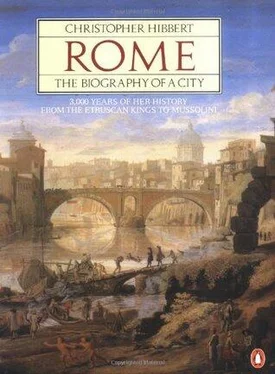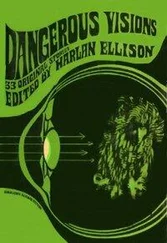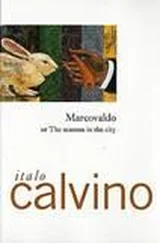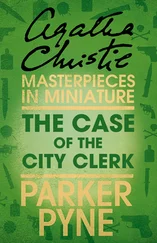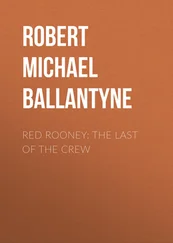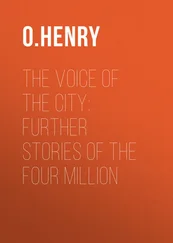Christopher Hibbert - Rome. The Biography of the City
Здесь есть возможность читать онлайн «Christopher Hibbert - Rome. The Biography of the City» весь текст электронной книги совершенно бесплатно (целиком полную версию без сокращений). В некоторых случаях можно слушать аудио, скачать через торрент в формате fb2 и присутствует краткое содержание. Жанр: Культурология, Искусство и Дизайн, на английском языке. Описание произведения, (предисловие) а так же отзывы посетителей доступны на портале библиотеки ЛибКат.
- Название:Rome. The Biography of the City
- Автор:
- Жанр:
- Год:неизвестен
- ISBN:нет данных
- Рейтинг книги:3 / 5. Голосов: 1
-
Избранное:Добавить в избранное
- Отзывы:
-
Ваша оценка:
- 60
- 1
- 2
- 3
- 4
- 5
Rome. The Biography of the City: краткое содержание, описание и аннотация
Предлагаем к чтению аннотацию, описание, краткое содержание или предисловие (зависит от того, что написал сам автор книги «Rome. The Biography of the City»). Если вы не нашли необходимую информацию о книге — напишите в комментариях, мы постараемся отыскать её.
Rome. The Biography of the City — читать онлайн бесплатно полную книгу (весь текст) целиком
Ниже представлен текст книги, разбитый по страницам. Система сохранения места последней прочитанной страницы, позволяет с удобством читать онлайн бесплатно книгу «Rome. The Biography of the City», без необходимости каждый раз заново искать на чём Вы остановились. Поставьте закладку, и сможете в любой момент перейти на страницу, на которой закончили чтение.
Интервал:
Закладка:
Outside the rioni the rapidly developing city has been divided into twenty-five quartieri .
10. A remarkable and huge construction of large stone blocks, faced with Corinthian columns in three tiers separated by wide architraves, the SEPTIZONIUM or SEPTIZONIUM SEPTIZODIUM resembled the scenae frons of a Roman theatre. Dedicated by the Emperor Septimius Severus in 203, it was built against the south-eastern slope of the Palatine so that it could be seen by travellers approaching Rome from the south along the Via Appia. It rose from the bottom of the valley to the level of the imperial palaces on the Palatine hill. Substantial parts of it were still standing when Pope Sixtus V (1585–90) had it entirely demolished.
11. St Clement was accounted the third successor of St Peter. He was venerated as a martyr and known as the writer of a famous letter to the Church in Corinth. Built before 385, the church named after him in Via S. Giovanni in Laterano, S. CLEMENTE, is one of the oldest basilicas in Rome. It is made up of two churches, one above the other, resting on several layers of earlier Roman remains including those of a Mithraic shrine and a first-century house, part of which was used as a place of secret Christian worship. The excavated remains of this house and temple are still to be seen deep below the pavements of the modern city. The lower church, mentioned by St Jerome in 392, was restored in the eighth and ninth centuries and then totally destroyed by the Normans in 1084. In 1108 Pope Paschal II built the upper church which was reconstructed by Carlo Fontana during the pontificate of Clement XI (1700-1721). There are fine mosaics in the apse, an outstandingly vivid painting of the Annunciation by the Florentine artist, Masolino, and a beautiful Cosmatesque pavement. The church has been in the care of Irish Dominicans since 1667.
12. Said to have been founded by Pope Calixtus I (218–22) and completed by Pope Julius I (337–52), S. MARIA IN TRASTEVERE, which stands in the heart of this rione , is one of the oldest churches in Rome. Rebuilt by Pope Innocent II (1130–43) of the Trastevere family, the Papareschi, it was restored by Pope Clement XI (1700–1721) who added the portico by Carlo Fontana, and in 1870 by Pius IX. There are outstanding twelfth-century mosaics by Byzantine craftsmen in the apse, and below them other splendid thirteenth-century mosaics by Pietro Cavallini. The lovely mosaics on the façade were probably completed in the thirteenth century.
13. S. BARTOLOMEO IN ISOLA, the church on the Tiber Island, was built by the German Emperor Otto III (980–1002) over the ruins of a Temple of Aesculapius and dedicated to the Emperor's friend, St Adalbert. It was restored in 1113 by Pope Paschal II and again in 1180 after it had been rededicated to St Bartholomew. It was demolished by a flood in 1557 and rebuilt in 1624 by the Roman architect, Orazio Torriani. The campanile is of the twelfth century.
14. The fifth-century church of S. CRISOGNO was rebuilt in 1130 by the Papareschi Pope, Innocent II. It underwent radical restoration in 1626 in the Baroque style of G. B. Soria, but was allowed to retain its splendid Romanesque campanile. Beneath the church, excavations have revealed the hall of a large building of the fourth century which was used as a titulus (see note 1, Chapter 8).
15. The fifth-century church of s. GIOVANNI A PORTA LATINA was founded by St Gelasius I (492–6), rebuilt in 722 by Pope Hadrian I and reconsecrated by Pope Celestine III in 1191. Recent alterations have restored its ancient simplicity. The lovely campanile is of the twelfth century.
16. Built before the tenth century, the church of SS. BONIFACIO E ALESSIO on the Aventine hill was largely rebuilt in 1750.
17. The residence of the popes which was originally attached to ST PETER'S on the Vatican hill was a modest mansion erected by Pope Symmachus (498-514) when he was ousted from his palace at the LATERAN by the Emperor Theodoric the Great. But as the Emperors Charlemagne and Otto II both stayed at the VATICAN during their visits to Rome, Charlemagne in 781 and 800 and Otto in 980, the residence must by then have been imposing enough. Restored by Popes Eugenius III in 1150 and Celestine III in about 1191, it was enlarged by Innocent III (1198–1216) and Nicholas III (1277–80). And since the Lateran Palace had become uninhabitable during the papal transfer to Avignon, Gregory XI, on his return to Rome in 1377, took up residence in the Vatican. His successors expanded the Vatican buildings enormously. Notable were the extensions of Nicholas V (1447–55), who created the Papagallo courtyard; of Sixtus IV (1471–84), who in 1473 built the Sistine Chapel; of Innocent VIII (1484–92) who was responsible for the Palace of the Belvedere; of Alexander VI (1492–1503) who raised the Borgia Tower. Julius II, Paul III, Gregory XIII and Sixtus V all made further extensive additions. The railway station was added in this century by Pius XI.
18. The TOR DE' CONTI, built by the family of Pope Innocent III (1198–1216), was considered one of the marvels of the Middle Ages in Rome. Petrarch thought it ‘unique in the whole city’. A violent earthquake in 1348 demolished the upper part, leaving no more than a stump.
19. The hospital, built in 1198 by Pope Innocent III, was put in charge of Guy de Montpellier, the founder of the nursing order of the Holy Spirit in France. The hospital stands on the right bank of the Tiber close to the Porta S. Spirito within the Leonine City or Borgo. The founder of the Burgus Saxonum , the quarter from which the Borgo derived its name, was in all likelihood King Ine of Wessex who renounced his kingdom in 726 in order to spend his remaining days in Rome. He had built a church, dedicated to the Virgin, for the pilgrims of the Saxon nation on the site now occupied by the Renaissance church of S. SPIRITO IN SASSIA which was rebuilt after the Sack of Rome in 1527 by Antonio da Sangallo the younger. To King Ine's early church other buildings were attached including a hospice, but the institution had fallen into decay when Innocent III expropriated it in 1198 to found a new general hospital. The existing ARCIOSPEDALE DI S. SPIRITO IN SASSIA was erected by Pope Sixtus IV between 1473 and 1478 after the destruction of the old hospital by fire in 1471.
20. The porch of the PORTICO OF OCTAVIA became the site of a fish market which continued to function until recent times. Parts of the ruins of the portico were transformed into the atrium of the church of S. ANGELO IN PESCHERIA which was probably founded by Pope Stephen III (768–72). It was from this church that Cola di Rienzo set forth to establish the Republic of Rome on the night of Pentecost 1347.
21. Originally a diaconia , the Church of SS. SERGIO E BACCO, rebuilt by Pope Innocent III, survived near the ARCH OF SEPTIMIUS SEVERUS until it was demolished to make way for the triumphal procession of Charles V in 1536.
22. The head and hand of the statue of Constantine are now in the courtyard of the PALAZZO DEI CONSERVATORI.
23. The bronze tablet recording the transfer of power from Augustus to Vespasian is now in the Salone del Fauno in the CAPITOLINE MUSEUM.
24. The sculpture of the boy picking a thorn from his foot, a late Hellenistic sculpture of the first century B.C., is in the Sala dei Trionfi di Mario in the PALAZZO DEI CONSERVATORI.
25. The statue of the she-wolf is in the Sala della Lupa in the PALAZZO DEI CONSERVATORI. It is of Etruscan origin and is thought to be the work of Vulca of Veii or his school and dates from the sixth century B.C. or the beginning of the fifth. The twins Romulus and Remus were added by Antonio Pollaiuolo in 1498.
26. Situated in what is now the Piazza S. Silvestro, S. SILVESTRO IN CAPITE was built by Pope Stephen II (752–7) on the ruins of a Temple of the Sun erected by the Emperor Aurelian. The church's most prized relic is the head of St John the Baptist, hence its name. In the Middle Ages the monks made large sums by charging pilgrims for seeing the COLUMN OF MARCUS AURELIUS which was then in their possession.
Читать дальшеИнтервал:
Закладка:
Похожие книги на «Rome. The Biography of the City»
Представляем Вашему вниманию похожие книги на «Rome. The Biography of the City» списком для выбора. Мы отобрали схожую по названию и смыслу литературу в надежде предоставить читателям больше вариантов отыскать новые, интересные, ещё непрочитанные произведения.
Обсуждение, отзывы о книге «Rome. The Biography of the City» и просто собственные мнения читателей. Оставьте ваши комментарии, напишите, что Вы думаете о произведении, его смысле или главных героях. Укажите что конкретно понравилось, а что нет, и почему Вы так считаете.
